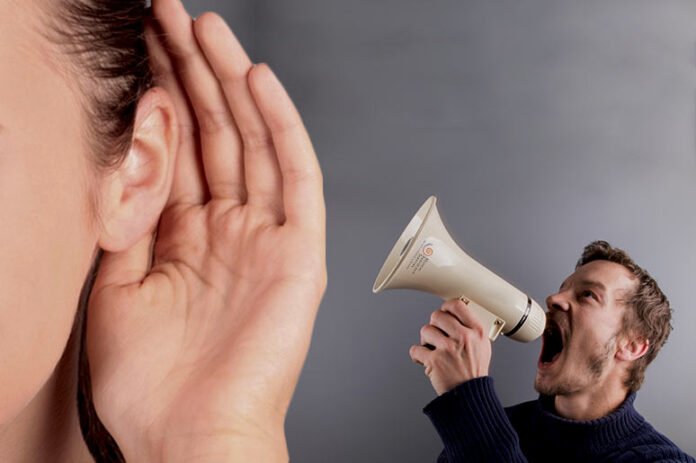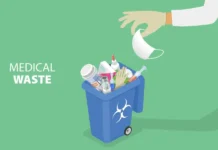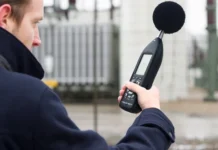Hearing is an essential part of a child’s development. Being able to hear properly allows children to develop speech and language skills as well as socialize and learn in school. Unfortunately, hearing problems are relatively common in children. Understanding the signs and symptoms of different hearing conditions can help parents get their child the treatment they need as early as possible. This article will give an overview of some of the most common hearing problems seen in children and explain the treatment options for each.
Otitis Media (Middle Ear Infections)
One of the most frequent issues that can impact hearing in children is otitis media, also referred to as a middle ear infection. This occurs when fluid builds up in the middle ear due to a viral or bacterial infection. The fluid puts pressure on the eardrum and ossicles (tiny bones) in the middle ear, causing pain and muffling sounds.
Signs of otitis media include ear pain, tugging at the ear, fussiness, drainage from the ear, and difficulty hearing or responding to quiet sounds. A fever may also be present. Otitis media is most common in babies and children between 6 months and 3 years old. It often occurs along with an upper respiratory infection.
Otitis media usually resolves on its own. But a persistent or severe infection may require treatment with prescription ear drops or antibiotics. Seeking treatment can prevent the infection from causing any permanent damage to the structures of the ear.
Earwax Blockage
A simple earwax blockage is another common cause of temporary hearing difficulty in children. The body naturally produces earwax (cerumen) to coat and protect the ear canal. Sometimes the wax can build up and harden, blocking sound from reaching the eardrum.
Signs of a blockage include feeling like the ear is plugged, ringing in the ear, ear pain, dizziness, and mild hearing loss. Babies and young children may show signs of discomfort like rubbing or pulling at their ears.
To treat a wax blockage, a pediatrician may prescribe medicated ear drops to soften the wax. Once softened, the doctor can safely remove the excess wax. Irrigation with warm water or a gentle lavage may also help remove the obstruction. Children should never insert cotton swabs or other objects into the ear canal to remove wax as this can cause harm. Regular hearing tests can detect wax buildup before it leads to more significant hearing difficulty.
Eustachian Tube Dysfunction
The eustachian tube is a small passageway that connects the nose to the middle ear space. This tube helps regulate air pressure in the ear. Eustachian tube dysfunction happens when the tube becomes blocked or impaired, such as from swelling due to allergies or a respiratory infection.
With an impaired eustachian tube, fluid may accumulate in the middle ear space. This results in muffled hearing. Popping or clicking sensations are also common with eustachian tube dysfunction. Children may feel ear pain or fullness. Problems with the eustachian tube are more likely in children due to their developing anatomy.
Eustachian tube dysfunction usually improves once the underlying condition (like congestion or an infection) clears. A doctor may recommend using a nasal spray, antihistamine, or decongestant to help open the eustachian tube. Children can also be taught exercises to open the tube, like yawning or swallowing. If dysfunction is chronic, a small ventilation tube inserted in the eardrum may help with drainage.
Noise-Induced Hearing Loss
Loud noises can damage the delicate hair cells in the inner ear that transmit sound signals to the brain. With prolonged exposure, this results in permanent sensorineural hearing loss. Noise-induced hearing loss is on the rise in children and adolescents due to recreational exposure to loud music through headphones or speakers.
The early signs are not always obvious. Mild noise-induced loss may go unnoticed until more extensive damage occurs. Symptoms include muffling of speech and difficulty understanding conversations, especially in noisy environments. Tinnitus (ringing in the ears) may also occur.
Preventing noise-induced hearing loss is better than treating it. Children should be educated to avoid extended exposure to sounds above 85 decibels. Volume limits and noise-canceling headphones are other smart options. If exposure has already occurred, various hearing aids and assistive devices can improve hearing and communication. Visit phonak.com/en-us to learn about safe hearing technology for kids.
Auditory Processing Disorder
Auditory processing disorder (APD) is a hearing condition that does not originate in the ear, but in the brain pathways that interpret sound. Children with APD struggle to process auditory information accurately, even when their hearing is normal.
Signs of APD include frequently misunderstanding what is said, needing repetition, trouble paying attention when listening, and difficulty following multi-step oral instructions. APD can lead to challenges in school, language delays, and low self-esteem.
Since the hearing structures themselves are intact, amplification devices don’t help APD. Instead, management involves speech therapy, environmental modifications, learning coping skills, and classroom accommodations. Treating any existing language, attention, or learning problems is also key.
Sensorineural Hearing Loss
Sensorineural hearing loss occurs when there is damage to the inner ear (cochlea) or to the hearing nerve pathways in the brain. This type of loss cannot be medically or surgically corrected. The most common cause in children is unaddressed congenital hearing impairment. Other causes include infant jaundice, viral/bacterial infections, and head injuries.
Signs of sensorineural loss include delayed speech development, lack of response to quiet sounds, and difficulty understanding speech. Screening is critical for early identification. Hearing aids can significantly improve hearing and quality of life. Teaching sign language and assistive communication can also be beneficial.
The earlier hearing loss is caught, the better the outcome. If you suspect your child has any kind of hearing difficulty, it’s important to consult their pediatrician promptly. They will be able to listen to your concerns and schedule a hearing test with an audiologist. Treatment and support services can make a major difference in your child’s development when provided early. With the right help, children with hearing impairments can thrive.
Read Also: The Ultimate Guide to Watching Instagram Stories Anonymously


































































![Easiest ways to fix iPhone error 4013? [Step by step Tutorial] iPhone error 4013](https://www.apzomedia.com/wp-content/uploads/2022/04/iPhone-error-4013-100x70.webp)
